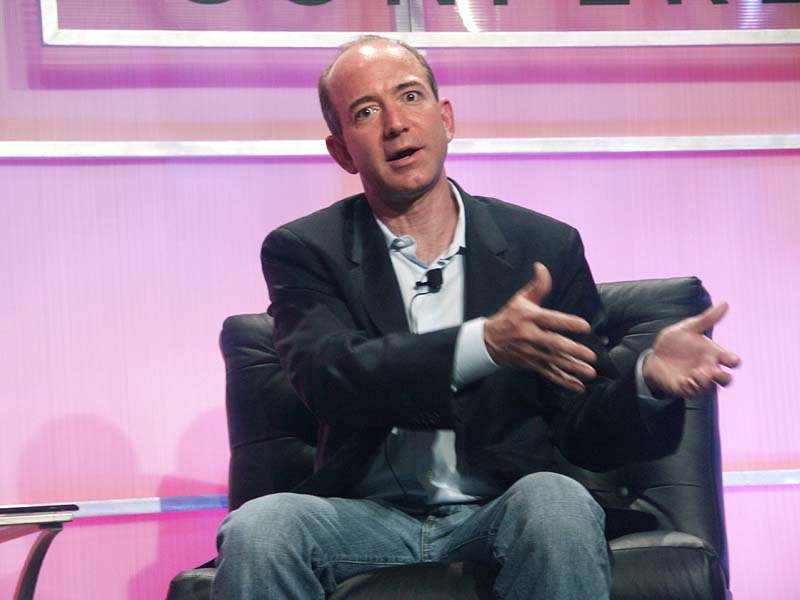Twenty-seven years is a long run as CEO, and it was inevitable that Jeff Bezos would eventually step aside to work both on outside projects and on strategy and vision, where Bezos is most influential. For Amazon, the shift to Andy Jassy can be cast in terms of continuity and change.
Continuity will mostly dominate. Bezos isn’t leaving. And Bezos has also consistently emphasized Amazon’s culture, which is now deeply embedded. It is not a normal company, as it demands a level of commitment that’s alien to large U.S. companies, reinforced by structures and processes that consistently support a model that demands hard work, relies on data-driven decisions, manages via small semi-autonomous teams, and generates enormous agility in the face of both opportunity and threats. Bezos specifically designed the culture to help reverse the inevitable entropy of large organizations, and it will outlast him. Of course, Jassy himself is also an Amazon lifer.
Similarly, much of the Amazon we know — the enormous retail platform, the dominant cloud computing provider, the logistics superstar — will roll forward. Amazon is designed to be a machine with a powerful autopilot, growing with minimal need for centralized strategic direction.
But the outside world is pressing on Amazon now, despite Amazon’s booming revenues, massive and growing profits, and diversified portfolio. Jassy has at least nine major strategic challenges to address in the next five years or so:
- Stop the bleeding at Amazon Retail — Amazon’s traditional retail market is still growing fast, but it lost more than $30 billion in 2019, as estimated through my own detailed analysis.
- Cut delivery costs — Shipping and fulfillment reached 29% of total revenues in 2019, and have expanded since with the push into one-day delivery plus the pandemic.
- Solve problems in the Marketplace — The mix of bad actors and poorly managed responses has been a PR disaster. Both sellers and customers will flee if the Marketplace turns into a den of thieves policed by thugs.
- Exit groceries — Jassy should re-read the 2006 letter to shareholders, where Bezos himself explained why groceries are a terrible fit for Amazon. Bezos was right in 2006 and his objections still hold.
- Make the case for Alexa — Alexa is a platform in search of a compelling business case, although home security and healthcare/wellness seem promising.
- Balance advertising revenues against user experience — Advertising is a magical source of revenue and massive margins, but stuffing ever greater numbers of ads into search results degrades the user experience. Amazon relies heavily on consumer trust, so it needs to present the best choices — not just the best ads.
- Fix, and then automate the warehouses — Trying to turn humans into robots doesn’t usually end well, but Amazon needs those human robots right now. Automation squares this circle, but may take a decade. In the meantime, Amazon has to do a lot better by its workers, including in delivery.
- Address international failures — AWS has been a global success, but the rest of Amazon has not. Aside from the U.K., Germany, and to a lesser degree France, international has been a continuing disappointment. Amazon got chased out of China and is struggling in India (its key strategic target). Jassy needs to decide which of Amazon’s international adventures are worth it.
- Prepare for more regulation — Both Congressional action and antitrust enforcement are ramping up, and while Amazon is better placed than the rest of the Big Tech companies, it needs to prepare for a different and much tougher environment.
Jassy will also have to accelerate the push into new sectors like Amazon Business, government, and healthcare, while continuing to expand old ones, as he has at AWS by pushing up the stack toward more profitable opportunities closer to the end user. Amazon is massively productive and increasingly profitable, a machine for making more Amazon and more money. But the challenges facing Jassy are still very real.
Before you go...
Please consider supporting Technical.ly to keep our independent journalism strong. Unlike most business-focused media outlets, we don’t have a paywall. Instead, we count on your personal and organizational support.
3 ways to support our work:- Contribute to the Journalism Fund. Charitable giving ensures our information remains free and accessible for residents to discover workforce programs and entrepreneurship pathways. This includes philanthropic grants and individual tax-deductible donations from readers like you.
- Use our Preferred Partners. Our directory of vetted providers offers high-quality recommendations for services our readers need, and each referral supports our journalism.
- Use our services. If you need entrepreneurs and tech leaders to buy your services, are seeking technologists to hire or want more professionals to know about your ecosystem, Technical.ly has the biggest and most engaged audience in the mid-Atlantic. We help companies tell their stories and answer big questions to meet and serve our community.
Join our growing Slack community
Join 5,000 tech professionals and entrepreneurs in our community Slack today!

The person charged in the UnitedHealthcare CEO shooting had a ton of tech connections

Delaware students take a field trip to China using their tablets and ChatGPT

Northern Virginia defense contractor acquires aerospace startup in $4B deal



